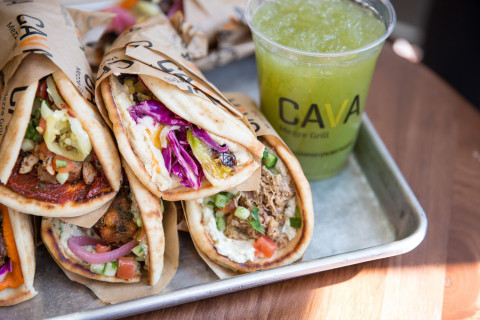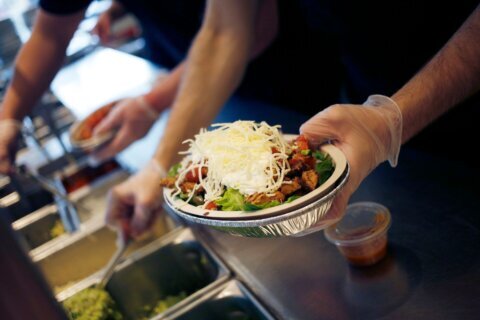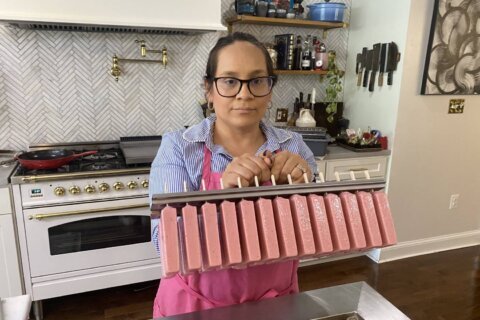WASHINGTON — When The Shaw Bijou announced its closure on Jan. 15, the D.C. dining community was stunned.
Sure, it had a few kinks to work out: Initial reviews were less than laudable and the price tag was too exclusive for most (an issue the chef attempted to correct). But the eight-table fine-dining restaurant that took 18 months to carefully construct had only been open for two and a half months.
Restaurant closures are not uncommon. Bill Guilfoyle, associate professor of business management at the Culinary Institute of America, says about 24 percent of new restaurants don’t make it past the first year. Eighty percent fail by year five.
Guilfoyle said, “I tell my students, ‘If you’re starting a restaurant today then you have a 20 percent chance of being in business five years from now.'”
All of the restaurants in the coveted 20 percent have something in common. Here are just a few examples:
Fast food makes fast dough
The restaurant business is not exclusively risky — the aforementioned stats hold true for most new businesses. Guilfoyle says restaurants just make up a large majority of new business development since they have low barriers of entry.
“You can start up a restaurant pretty inexpensively if you choose to,” he said, placing the range between $200,000 on the low end to more than $1 million on the high end for the fanciest establishments.
These days, most restaurant owners who experience success are doing so on the lower end of that spectrum, sans white tablecloths and sous-vide beef. Guilfoyle says the fastest-growing category in the industry is fast-casual — think Chipotle and Cava Grill.
“And what’s interesting about that segment is that it’s attracting a number of either restaurateurs or chefs to it,” he said.
In 2015, D.C.’s darling chef José Andrés, who runs seven restaurant concepts in the region, opened his fast-casual eatery Beefsteak, which now has five locations. New York restaurateur Danny Meyer, who oversees 14 different restaurants, introduced his popular burger stand Shake Shack in 2004. Now, it has more than 100 outposts worldwide.
“And now that concept will make far more money for him than any of his other fine-dining concepts,” Guilfoyle said about Meyer’s Shake Shack.
In addition to a growing consumer demand for high-quality food on the go, Guilfoyle says well-run fast-casual concepts have a better shot at success because they have higher profit margins, compared to fine-dining restaurants.
Experience sharpens more than knife skills
Eighteen years ago, Robert Wiedmaier decided to roll the dice on the less profitable model. He opened his fix-priced French restaurant, Marcel’s, on Pennsylvania Avenue in Northwest D.C. — but it took him a while to get there.
“Back then, to be a chef, you had to work for a chef for a long time,” said Wiedmaier, who climbed his way through the traditional hierarchy in kitchens throughout Europe and then at The Four Seasons and The Watergate Hotel in D.C.
Working under other seasoned chefs taught Wiedmaier more than knife skills: He learned the business side of running a restaurant, such as how to minimize food waste, how to manage a staff and how to pay rent on time.
“If you don’t stay on top of that kind of stuff, you could be a packed restaurant and lose your restaurant in two years,” Wiedmaier said.
Nine years after he started Marcel’s, Wiedmaier opened his second restaurant, Brasserie Beck. He wasn’t in a rush to grow his empire, but he wanted to give his loyal chef de cuisine the chance to run his own place.
Wiedmaier, who now oversees nine restaurants in the D.C. area, has experienced success in the industry — but not without some failure. His Asian-inspired concept, Urban Heights, closed in 2016 less than a year after it opened, and Wiedmaier says he should have pulled the plug seven months earlier.
“It was just the wrong concept in the wrong place and it didn’t work, but we waited and waited and waited and thought that it was eventually going to work out. So it cost us a lot, a lot of money,” he said.
“You have to know your numbers. If it’s not working, it’s not working. And if you don’t see a change, if you don’t see it happening soon enough, if you’re just pouring money out and you don’t see any money coming in, you need to jump on it quick.”
Shortly after shuttering Urban Heights, Wiedmaier reopened the Bethesda-based space as a sports bar with longtime neighborhood business Tommy Joe’s.
“You gotta give the people what they want,” he said.
Capitalize on opportunities for growth
Nick Stefanelli is about to take a big step since opening his first restaurant, Masseria, in August 2015. He’s currently working on plans for a three-story market/restaurant/bar concept on D.C.’s Southwest waterfront.
“I could be completely happy just being the chef at Masseria and riding off into the sunset for the next 40 years, but then there’s kind of this piece of me that also always wants a challenge,” Stefanelli said about his decision to grow into the new Wharf development.
Like Wiedmaier, he says a primary reason for expanding is to create opportunities for others, much like his former boss, restaurateur Ashok Bajaj, created for him.
“He really set me up for success just with learning how to run and operate a business and staying true to who you are as a brand, but also knowing how to keep the lights on and keep people paid and motivated. It was a phenomenal learning experience,” said Stefanelli, whose new restaurant is a favorite of former first lady Michelle Obama.
Guilfoyle says when chefs open a restaurant, they need to research their demographic, scope out their competition and find a niche or a segment within the competition that’s not being served. Stefanelli’s plans for his three-story venture include a 3,200-square-foot specialty market, a restaurant that serves as a “little brother” to Masseria and a rooftop bar/private-event space.
Stefanelli won’t be the only chef on the block. He will be joined by James Beard Award-winning chef Fabio Tracocchi, Mike Isabella, Jamie Leeds, Todd Thrasher, Cathal Armstrong and several other notable names.
He says there was no clear sign that it was time to take the next step, but he feels confident that past successes and failures have prepared him for whatever lies ahead.
“Do you really know if you’re ever going to be ready for growth? I think you take a challenge on when you feel like you’ve got a good set of people around you that can help to execute on that and build up from there,” he said.







